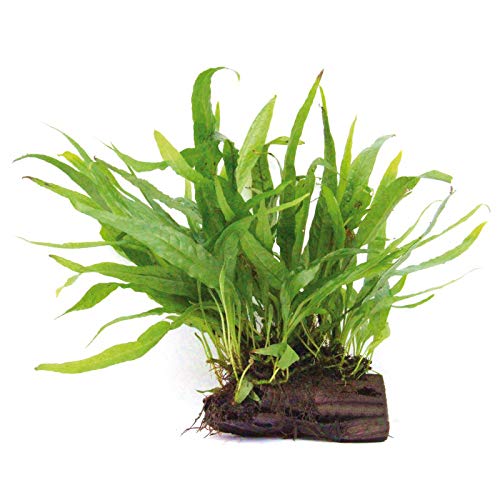

Depending on your fish tank size, Java fern can be an amazing mid or background plant. With its long, tender leaves and bushy structure, Java fern is also an excellent addition to one’s aquascape.

While you would find many aquariums having fancy installations like carbon dioxide systems, Java ferns would happily support themselves in a minimalistic setup. They can pull through a wide range in the temperature and pH scale when it comes to the water, and, in fact, give back by absorbing the nitrates from the water, thus functioning as great cleansing agents. Therefore, they do not have specific lighting requirements and require very little fertilization. They can sustain themselves in a wide range of conditions. They mimic the habitat of the fish species, thus providing them with an ideal ecosystem. They are traditional green aquarium plants that provide adequate shelter, a grazing area, and cover to the fish with their long swaying leaves. Java ferns provide a whole range of benefits. This plant has tough leaves and is a robust and hardy aquarium plant choice. Even though some say that Java ferns can survive in brackish water, it’s best to go with soft freshwater. They are low on maintenance, require a non-fancy substrate, are easy to propagate, and thrive in the worst water conditions. It’s a smart and efficient choice as an aquatic plant for those starting with the hobby of setting up planted tanks. Java fern is a robust plant and an easy pick for aquarists, regardless of whether they are beginners or advanced.

This process of plant propagation of the Java fern is referred to as “Apomixis.” Java Fern in the Aquarium While still attached to the parent plant, the plantlet will develop its root base and will ultimately break away from the parent plant and flow to anchor itself someplace else. The plantlets grow just beneath the parent Java fern plant. The black bumps that develop on the ferns will soon produce plantlets supported by a nutrient-rich environment. Unlike the usual reproduction by generating seeds, Java ferns have a unique plant propagation process that involves cloning themselves. This variety can grow in numerous water parameters and low-light conditions. The green, finely branched leaf tips give a frilly look to the Windelov Java fern, thus making it attractive and enhancing the aquarium decor. The uniqueness lies in its trident design with leaves forked to the central plant. This is a rare species of Java fern originating from Borneo. Its ribbon-like leaves and slender shape make this Java fern variety a sleek fit for a classy planted aquarium setup. It’s an ideal accessory pursued in the aquarium hobby for its narrow and intricate foliage that adds detail to the fish tank. This is a rare but vibrant and busy group of Java ferns. Because of the thin leaves, it’s best not to keep them with giant crayfish. Narrow-leaf Java fern has thin, elegant leaves maturing with an acute angle to the stem. Its scientific name is Microsorum Pteropus and comes in a few varieties. They do not need special soil or anything excessive. Lace java fern will accept most water parameters and thrive in stable conditions.Java fern belongs to the Polypodiaceae family and is considered to be a true aquatic plant, for it grows while wholly immersed in water. With all our plants, we mainly just allow them to float in the water or settle where they like. We grow it with little attention under low light and no fertilizer dosing. Lace java fern is extremely hardy and can survive in even hard water. It propagates by either cutting the rhizome, horizontal shoots or by plantlets growing from the underside of leaves. Often times, we will find lace java fern growing out of our sponge filters due to tiny plantlets breaking away from the mother. The large green leaves look best attached to driftwood and growing up or down a branch. It can be easily attached to driftwood or rocks. It is an aquatic fern that grows very well under low light. Provides hiding places for shrimp and baby shrimp.Helps convert toxins in the water and heavy metals into safe organics.Usually, this will include one plant with at least 4 leaves. You will receive one portion of lace java fern. It does not require much to thrive making it the perfect addition to any planted shrimp tank. Lace java fern "Windelov" is a great low light plant that is extremely hardy.


 0 kommentar(er)
0 kommentar(er)
